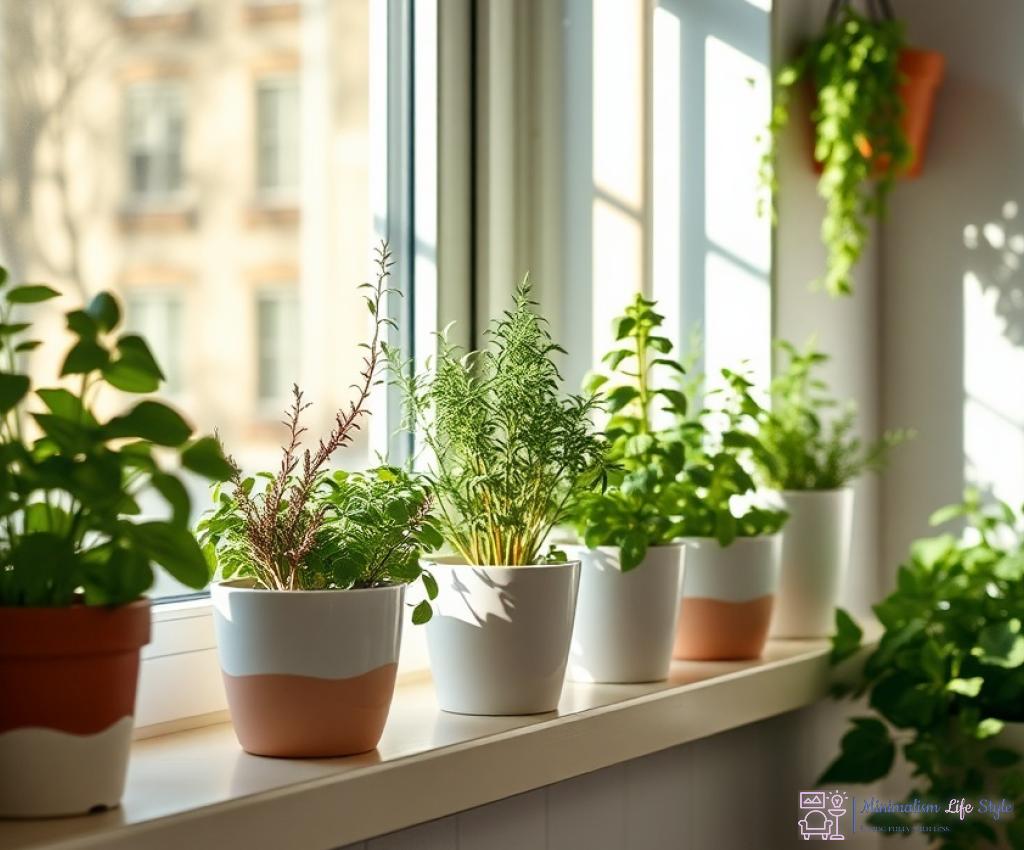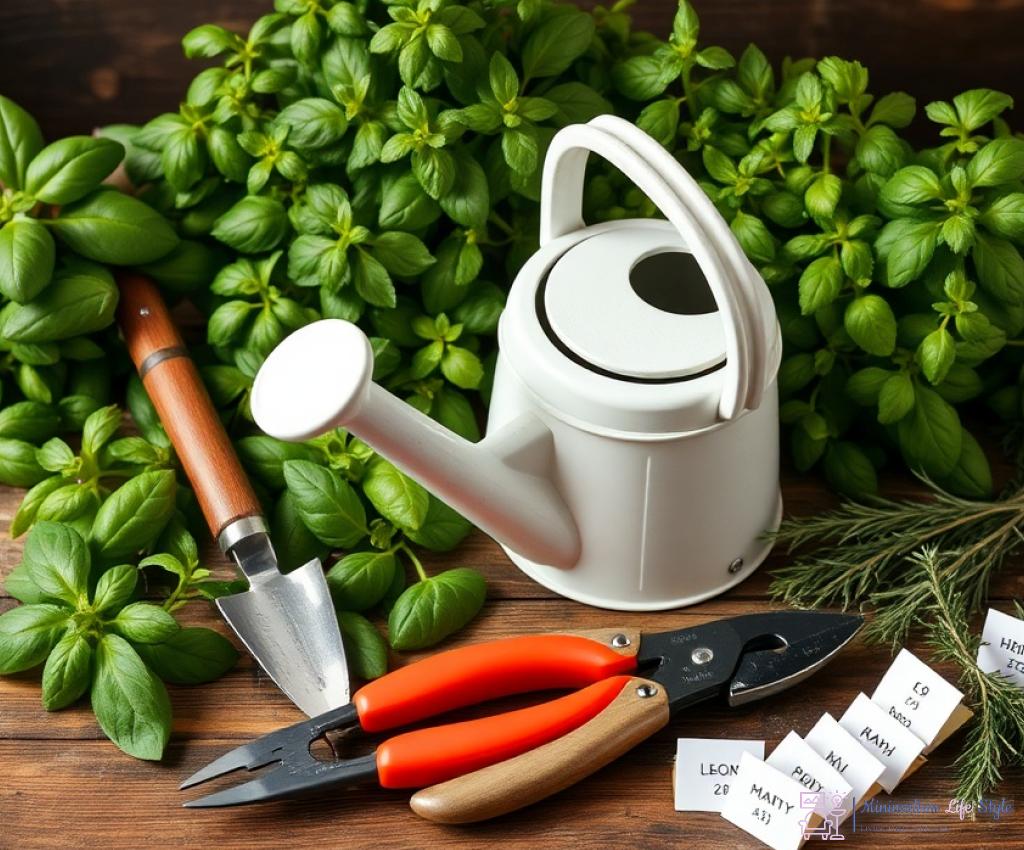Choosing the Right Herbs for Your Space

Before diving into the world of herbs, it’s essential to assess your living environment. Are you working with a sunny windowsill, a balcony, or perhaps a shaded corner of your home? Each space has its unique characteristics that can influence your herb selection. Understanding these factors will help you create a thriving herb garden that suits your lifestyle and culinary preferences.
Not all herbs thrive in the same conditions, so choosing the right ones is crucial. Here’s a quick guide to help you match herbs with your growing environment:
| Herb | Light Requirements | Ideal Space |
|---|---|---|
| Basil | Full Sun | Sunny Windowsill/Balcony |
| Mint | Partial Shade | Shaded Corner |
| Chives | Full Sun to Partial Shade | Windowsill or Balcony |
| Parsley | Partial Shade | Indoors or Outdoors |
| Cilantro | Full Sun | Sunny Outdoor Space |
This table summarizes the light requirements and ideal spaces for some of the most popular herbs. Selecting herbs that fit your specific conditions will ensure they flourish.
Once you’ve identified the right herbs for your space, consider how to pair them for both aesthetic and culinary benefits. Mixing herbs not only enhances the beauty of your garden but also optimizes growth and flavor. Here’s a short list of some fantastic herb pairings:
- Basil and Tomatoes: A classic duo that thrives together.
- Mint and Chives: Adds a refreshing touch to any dish.
- Rosemary and Thyme: Perfect for savory recipes.
- Cilantro and Jalapeños: Ideal for spicy dishes.
By carefully choosing and pairing your herbs, you can enjoy a flavorful and visually appealing garden that enhances your cooking.
Essential Tools for the Home Herb Gardener

Embarking on the journey of creating your own herb garden can be both rewarding and fulfilling. To ensure your gardening experience is as seamless as possible, having the right tools at your disposal is paramount. The essentials not only support the growth of your herbs but also make the process enjoyable, taking the stress out of gardening.
Every successful herb gardener knows that quality tools can make all the difference. Start with a pair of reliable gardening gloves. These protect your hands from dirt and any prickly herbs while also allowing for better grip on your tools. Next, a small trowel is indispensable for planting, transplanting, and digging in your pots or garden beds. It allows for precise movements, ensuring you don’t disturb the roots of your herbs. Additionally, a watering can with a long spout will enable you to reach into tight spaces without making a mess, providing just the right amount of moisture for your plants.
Once your herbs are planted, maintaining their health is crucial. A good pair of pruning shears is essential for trimming and harvesting your herbs. Regular snipping encourages growth and ensures that your plants remain lush and productive. Furthermore, a soil moisture meter can be a gardener’s best friend, helping you gauge when your herbs need water without the guesswork. This tool takes the uncertainty out of watering, allowing you to focus on enjoying your garden rather than worrying about over or under-watering.
Finally, keep in mind that organization is key. A simple gardening apron with pockets can help keep your tools handy while you work. It minimizes distractions and allows you to concentrate on nurturing your herbs. With these essential tools, your herb gardening experience will not only be simplified but also transformed into a delightful endeavor, making you a proud green thumb in no time!
Simple Soil Secrets for Thriving Herbs
When it comes to cultivating a successful herb garden, the foundation lies within the soil. Just as we require a nutritious diet to thrive, herbs need the right soil composition to flourish. Understanding the essential elements of soil can turn your gardening efforts into a vibrant, green success story.
Choosing the right soil for your herbs is not merely a matter of convenience; it is critical for their overall health and productivity. Herbs typically prefer well-draining soil that allows roots to breathe while retaining enough moisture to sustain growth. A balanced mix of organic matter, such as compost or well-rotted manure, can enrich your soil, providing the nutrients necessary for robust herb development.
To achieve a soil blend that supports your herbs, consider the following key ingredients that can elevate your gardening game:
- Potting Mix: A quality commercial potting mix provides a balanced foundation, ensuring good drainage and aeration.
- Compost: Adding compost not only enriches the soil but also improves its structure, leading to healthier root systems.
- Perlite or Vermiculite: These amendments enhance drainage and aeration, preventing root rot in your herbs.
- Organic Fertilizer: Incorporating a slow-release organic fertilizer can provide the essential nutrients your herbs crave throughout their growth cycle.
By combining these components, you create an inviting environment for your herbs to thrive, ensuring a bountiful yield of aromatic goodness.
While the right ingredients are vital, understanding your soil’s pH can make a significant difference in the health of your herbs. Most culinary herbs prefer a slightly acidic to neutral pH, ideally between 6.0 and 7.0. Conducting a simple soil pH test allows you to make necessary adjustments, ensuring your herbs can efficiently absorb nutrients.
For those looking to lower the pH, consider adding elemental sulfur or organic materials like pine needles. If your soil is too acidic, lime can help restore balance. Regular monitoring and adjustments can transform your herb garden into a flourishing oasis.
Watering Wisely: Tips for Herb Health
Watering is a fundamental aspect of herb gardening that can make or break your plants’ success. While it may seem straightforward, understanding the nuances of watering can elevate your herb garden from mediocre to thriving. Every herb has unique water requirements, influenced by factors such as the type of soil, the size of the pot, and the environmental conditions. A keen awareness of these elements will ensure that your herbs receive just the right amount of moisture to flourish without succumbing to the pitfalls of over or under-watering.
Each herb comes with its own set of hydration preferences, and recognizing these differences is crucial for their health. For instance, herbs like basil thrive in consistently moist soil, whereas others such as rosemary prefer drier conditions. This variance means that a one-size-fits-all approach to watering simply won’t work. Instead, pay close attention to the specific needs of each herb variety, adjusting your watering habits accordingly.
Monitoring the moisture level in the soil is a key practice for every herb gardener. A simple method involves sticking your finger about an inch into the soil; if it feels dry at that depth, it’s time to water. On the contrary, if it still feels damp, hold off for a while. This tactile approach allows you to gauge the soil’s condition effectively and respond to your herbs’ demands.
Creating a personalized watering schedule can significantly enhance the health of your herb garden. Consider factors such as the season, temperature, and humidity levels. During the hotter months, your herbs may require more frequent watering, while in cooler weather, a less frequent schedule may suffice. Additionally, early morning is typically the best time to water, as it allows plants to absorb moisture before the heat of the day causes evaporation.
Moreover, using the right watering technique can further optimize your watering efforts. Instead of pouring water directly onto the leaves, which can lead to fungal diseases, aim to water at the base of the plant. This targeted approach not only conserves water but also ensures that the roots receive maximum hydration.
| Herb | Watering Frequency | Soil Moisture Preference |
|---|---|---|
| Basil | Every 2-3 days | Consistently moist |
| Mint | Every 3-5 days | Moist but well-drained |
| Rosemary | Every 7-10 days | Dry between waterings |
| Thyme | Every 7-10 days | Dry between waterings |
By crafting a watering routine that aligns with the needs of your herbs, you set the stage for a lush and productive herb garden. Remember that healthy herbs not only require the right amount of water but also a gardener who pays attention to their signs and signals. Embrace the nuances of watering, and watch your herb garden thrive!
Harvesting and Using Your Homegrown Herbs
There’s something immensely satisfying about reaping the rewards of your efforts in the garden. When the time comes to harvest your homegrown herbs, it’s not just a task; it’s a celebration of your dedication and nurturing spirit. Each snip of the scissors or twist of the wrist opens the door to an array of culinary possibilities, transforming your meals and enhancing your dishes with freshness that store-bought herbs simply can’t match. The journey from garden to table is one that invites creativity, exploration, and a touch of adventure in your cooking.
Knowing the right moment to harvest your herbs can significantly impact their flavor and vitality. Most herbs are best harvested just before they bloom, as this is when their essential oils are at their peak. For leafy herbs like basil and mint, snipping the leaves can stimulate further growth, ensuring a continuous supply. It’s advisable to follow the rule of thumb—harvest in the morning after the dew has dried but before the sun reaches its peak. This timing not only preserves the freshness of the herbs but also enhances their flavor profile, making your culinary endeavors even more delightful.
Once your herbs are harvested, the fun truly begins. The versatility of fresh herbs allows you to explore a myriad of flavors in your cooking. Imagine the vibrant aroma of freshly chopped basil sprinkled over a homemade pizza or the refreshing zest of mint infusing a cool summer drink. Fresh herbs can elevate even the simplest dishes, transforming ordinary meals into extraordinary experiences. Consider making herb-infused oils or butters—an easy way to bring the essence of your garden into everyday cooking. Simply blend your herbs with high-quality oil or softened butter, and you have a gourmet ingredient ready to elevate any dish.
Additionally, don’t overlook the power of drying or freezing your herbs for later use. This method not only preserves the flavor but also extends your harvest well beyond the growing season. Simply hang bundles of herbs upside down in a cool, dark place until they’re completely dry, or chop and freeze them in ice cube trays with a splash of water or broth. This way, you can enjoy the taste of your garden all year long, adding a personal touch to your recipes with herbs that you’ve nurtured yourself.




